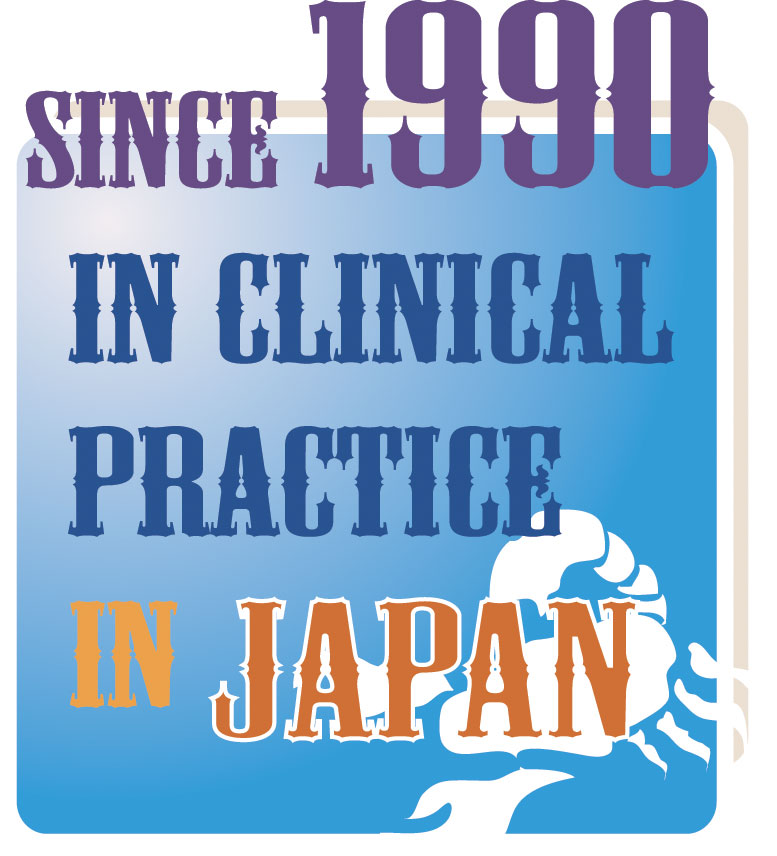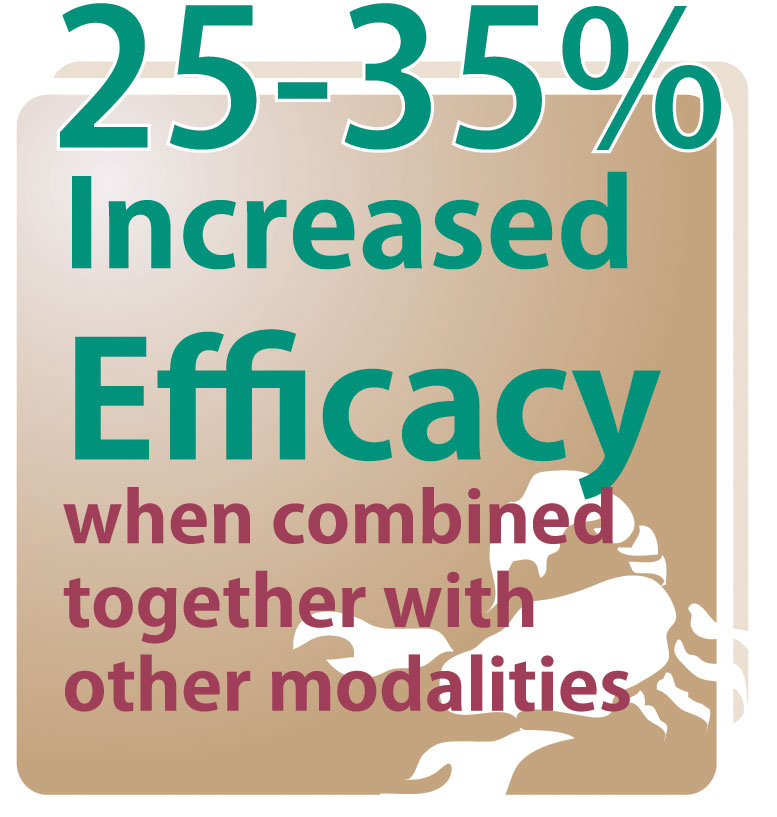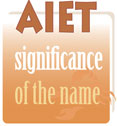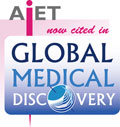Sample menu:
1. What is immunotherapy?
2. How does AIET work?
3. What kind of Immunotherapy is AIET?
4. What are the major advantages of this treatment?
6. Has it been already done and proven with evidence of randomized clinical trials?
7. Where is AIET available?
8. Have the evidences been published in peer reviewed journals?
9. Can it be used for all cancers?
10. Can AIET be given for haematological malignancies (Blood Cancers)?
11. Does AIET work in brain tumours?
12. Can AIET be of help in viral infections and Chronic Fatigue Syndrome (CFS)?
13. What are the procedures involved with immunotherapy?
14. Does the immunotherapy necessitate admission of the patients to a hospital?
15. What are all problems that are anticipated during the administration of the cells?
16. Can the AIET be taken simultaneously with chemo or radio therapies?
17. What are the precautions to be taken if AIET is to be administered along with other treatments?
18. Can the AIET be taken along with other kinds of alternative cancer therapies?
19. Are there any situaions where blood cannot be harvested for AIET?
20. Are there any diseases/conditions in which AIET is contraindicated?
21. What precautions are taken during the culture?
22. How do you know that the right type of cells have been multiplied?
23. What is the success rate?
24. What are the Dosage requirements and timing of administration?
25. What is the basis on which, the number of cycles of AIET transfusion are decided?
26. How do you follow up the patients after AIET is done?
27. Have patients with advanced stage of cancer been treated with AIET?
28. What are your results of AIET in terminally ill patients?
30. Is there any other treatment modality which when combined with AIET can offer additional benefits for cancer patients?
31. Will AIET therapy costs be reimbursed by healthcare insurance providers?
Immunotherapy is a treatment modality by which the immune system of the body (which usually prevents cancer cell formation and destroys the already formed cancer cells) is enhanced directly or indirectly by several methodologies as explained below,
- By administering nutraceuticals, drugs, alternative medicines like herbs etc
- By administering cytokines such as interleukins which enhance the immune cells to act against cancer.
The above two methodologies work in an indirect manner against cancer - Harvesting the immune cells Natural Killer(NK) cells, cytotoxic T lympocytes (CTLs) directly from the patient, multiplying them in the lab and transfusing them back to the patient intravenously so that these cells will directly destroy the cancer cells.
This type of cell based immunotherapy using the patient's own immune cells themselves to tackle cancer is employed as AIET for cancer
The Lymphocytes are the first line of defense in our body against Cancer cells; specifically the NK cells and CTLs. They are very efficient because they cause direct destruction of Cancer Cells and do not need activation by antibodies.
Normally only 5% - 10% of our body’s WBC are Natural killer cells. In AIET, we activate the cancer killing lymphocytes and multiply them. NK Cells are multiplied into many folds, so that once infused both the CTL’s and NK Cells will destroy the cancer cells.
3. What kind of Immunotherapy is AIET?
AIET is a cell based Immunotherapy. This is a process of enhancement of the innate immunity present in all individuals. Lymphocytes are the most important functioning components of this innate immunity, in which a part of them are Natural Killer (NK) cells and T-Lymphocytes. In AIET these cells are taken from the patientís own blood and then in the laboratory (in vitro) they are multiplied, activated and transfused intravenously to the patient.
The AIET methodology mainly uses a dual combination of NK cells and CTLs as they have a definite advantage over the other combinations
![]()
4. What are the major advantages of this treatment?
The major and unique advantage of this cell based immunotherapy - AIET is that there are NO significant adverse reactions with AIET. The cells of the patient which are multiplied using patients own serum, this is considered to be the safest and least toxic among all kinds of cancer treatments.
5. What are the advantages of using NK cells and T cell combination over other immune cells, in AIET?
Activated NK cells and CTLs can target both type of cancer cells, those that express the MHC class I molecules and those that do not. Cells which express MHC class I are destroyed by the CTLs while those that do not are killed by the NK cells thus bringing an efficient destruction of majority of the cancer cells . Also NK cells and T cells preferentially kill cancer stem cells which is an added advantage, because cancer stem cells are the most resistant of the cancer cells to most forms of therapy and they play major role in cancer recurrence (Tseng et al, 2010, Castriconi et al, 2009,Weng et al , 2010, Ahmed et al, 2010).
6. Has it been already done and proven with evidence of randomized clinical trials?
YES. AIET is a cell based immunotherapy which is being practiced in Japan and several developed nations since late 1990s. The randomized clinical trials which have proven the advantage of this treatment have been accomplished in 1990's with significant increase in survival rates as well disease free duration in patients treated with immunotherapy compared with those who have not been treated
AIET can be undertaken in several Collaborating Institutes in Japan.
8. Have the evidences been published in peer reviewed journals?
The evidences of IMMUNOTHERAPY have been published in peer reviewed journals. A selected list of the reference is available here.
9. Can it be used for all cancers?
Yes it is applicable for all cancers in general. But very good results have been reported with Renal Cell cancer (Kidney), Malignant Melanoma (Skin), Advanced Pancreatic Tumors, Lymphomas, Breast Cancer, Ovarian Cancer, Liver Cancer, Lung cancer, Colon Cancer, cancer of Esophagus and some types of Leukemias (Blood cancers). Terminally ill patients with metastases in the Lungs, Liver and Bone have also been treated with AIET.
10. Can AIET be given for haematological malignancies (Blood Cancers)?
Yes, AIET has been given for haematological malignancies like AML, ALL etc. in which only NK cells are administered. Since, the blood component themselves are cancerous in haematological malignancies, enough precautions are to be taken to ensure that the cancerous blood cells don’t grow or overgrow in the culture though it is very unlikely as in our studies the NK cells have been found to destroy such cancerous cells during the culture process itself. However, to ensure further safety of the AIET transfusion additional IP typing marker studies are performed to check that there are no cancerous cells in the AIET transfusion.
11. Does AIET work in brain tumours?
Contrary to the notion that the brain is an immune privileged site, recent evidences have demonstrated the infiltration of Immune cells particularly the cytotoxic T lymphocytes into the brain (Nishimura et al 2006, Sasaki et al 2007, Sasaki et al, 2008). Immunotherapy has been shown to be effective against high grade malignant brain tumours including Glioblastoma (Vauleon et al, 2010). Thus AIET can be administered for brain tumours also.
12. Can AIET be of help in viral infections and Chronic Fatigue Syndrome (CFS)?
There are evidences gradually piling to prove the efficiency of NK cells and T cells in viral infections and CFS. To know further details please click here
13. What are the procedures involved with immunotherapy?
a) Blood is collected by a simple puncture of the vein as is done for any other lab test.
b) The collected blood is then processed in the specialized lab by specially trained scientists under highly sterile and aseptic techniques.
c) The application of the proven Japanese technique by M/S Biotherapy Institute of Japan in the culture of the cells will result in three events:
i. Activation of Lymphocytes ii. Expansion of natural killer cells, iii. Multiplication of T Lymphocytes
d) After the process is completed the cultured cells of the patient are transfused (Given Back) to the patients as an intravenous drip some 10-20 days after the blood was collected from him/her.
Since the growth of the cells is controlled by multiple factors, the exact date of the transfusion will be known only after the cells start growing in the lab.
Please note that additional quantity of blood may have to be collected from the patient in between the transfusions of AIET for the purpose of obtaining autologous serum for cell culture. Click here for a stepwise description with illustration of the aiet procedure
14. Does the immunotherapy necessitate admission of the patients to a hospital?
The patient need not be admitted for collection of blood as it can be done as an outpatient procedure. But the patient has to be admitted for administering the cultured cells for one night after the transfusion for observation and can get discharged the next day, provided the general condition of the patient doesn’t warrant any in-patient treatment.
![]()
15. What are all problems that are anticipated during the administration of the cells?
In general there are no major adverse effects because the patients are given back the cells that were originally collected from them. Therefore the infusion is well tolerated. But during the process of destruction of the cancer cells by the cultured cells that are transfused, the patient may experience fever/fatigue on the day of administration. The risk of this is however is small. It occurred in less than 1% of patients in a study population that included more than 1400 patients.
16. Can the AIET be taken simultaneously with chemo or radiotherapies?
YES. AIET can be given with chemotherapy and/or radiotherapy.
Since chemotherapy may reduce the peripheral blood count, we recommend the patient to start the AIET even before the start of chemo for better NK cell and T Cell efficacy. The transfusion can be given in between chemo cycles in coordination with the oncologist.
17. What are the precautions to be taken if AIET is to be administered along with other treatments?
For the best results, before three days of the AIET transfusion, the chemotherapy should be stopped and resumed three days after the AIET transfusion. If patients have preplanned chemotherapy schedules, they can let us know the same and our staff will advise on AIET peripheral blood harvesting and transfusion schedules accordingly. In case of Radiotherapy, except during the time of Radiation exposure, the AIET transfusions can be administered giving a window period of one hour before and after radiotherapy.
18. Can the AIET be taken along with other kinds of alternative cancer therapies?
As long as the alternative therapy is not cytotoxic it can be taken simultaneously with AIET
19. Are there any situaions where blood cannot be harvested for AIET?

AIET involves the multiplication of NK cells and T Cells which are taken from the patient's peripheral blood. Therefore unless patient has normal or near normal values of peripheral blood cell count, the outcome of the cell expansion might not be optimal. Usually in patients who have undergone chemotherapy, the peripheral blood count could be low.
20. Are there any diseases/conditions in which AIET is contraindicated?
Since AIET involves autologous immune cells, this may not be indicated in patients who have auto immune diseases (such as SLE etc). In addition those patients under any form of immunosuppressive therapy should inform us in advance to plan the timing of the transfusions. We also don't recommend this to patients with active viral disease such as Hepatitis B or Hepatitis C.
21. What precautions are taken during the culture?
The culture technique is sterile so as to ensure that no bacterial contamination takes place. This is also objectively tested by ‘Endotoxin test’. If it is negative it implies that there is no bacterial contamination and only then will the cultured cells be administered to the patients.
22. How do you know that the right type of cells have been multiplied?
The cells after harvesting from the patient will be subjected to IPT (Immunophenotyping) by using flow cytometry. Then again after the process of expansion is over, the cultured cells will once again be subjected to IPT to check the quantity and quality of the desired cells before administering to the patients. This is done by a third party organization and the reports will be sent to the treating physician. Click here to know more information about the CD markers for the right type of cells
23. What is the success rate?
As in the treatment of cancers by other conventional methods, the patients who come early do better. A study which compared patients who have undergone the conventional treatment alone (Group 1) with that of the patients who have undergone the Immunotherapy in addition to the conventional treatment (Group 2) a 25-35% better results were obtained in Group 2 patients.
24. What are the Dosage requirements and timing of administration?
The dose is determined on a case to case basis depending on the severity/staging/spread/organ type of the cancer and general condition of the patient. To give a rough idea, if it is a cancer of a solid organ and the cancerous portion has been removed completely by surgery, one cycle of six transfusions (in three sittings; every sitting one transfusion each of NK cells and T cells) may be sufficient. Two or three such cycles may be required if the patient requires chemotherapy and/ radio therapy after surgery. Additional cycles may be necessary if the cancer is in advance stage. ![]()
 25. What is the basis on which, the number of cycles of AIET transfusion are decided?
25. What is the basis on which, the number of cycles of AIET transfusion are decided?
This is based on earlier studies and experience and the severity of the disease of the individual patient. As the patient might be undergoing or have undergone other treatments such as surgery or chemotherapy or radiotherapy, the remaining cancer in the body is adjudged by taking into account, the tumor size and tumor markers where relevant. So until the tumour markers become lesser gradually or until the tumour starts either shrinking or comes to a static non-progressive status, we have to keep treating it. In the first or second cycle of AIET if there are positive signs of such improvement, then further cycles could be given more aggressively.
26. How do you follow up the patients after AIET is done?
Depending upon the severity of the cancer, we recommend several cycles of AIET Transfusions. After atleast 3 to 6 weeks of transfusion the patients can be followed up by analysing the tumor markers and the volumetric analysis of the tumor, which is / are relevant.
27. Have patients with advanced stage of cancer been treated with AIET?
YES. Patients with advanced stage of cancer have been benefitted with AIET. For terminally ill patients we recommend an intensive course of three to four cycles of AIET within 45 days to start with. There are reports where breast cancer patients with multiple metastases have got a static disease for more than 15 months with 15 transfusions.
28. What are your results of AIET in terminally ill patients?
In general our Autologous Immune enhancement therapy has resulted in
- Static non-progressive disease in 27% of the patients; which means 27% patients continued without further progression of the disease
- Partial response in 23% of the patients; which means in 23 % of the patients, there was a significant reduction in size/volume of the tumour
- Compete response in 2% of the patients; which means in these patients the tumour disappeared completely
- Progression of the disease in rest of the patients
These are the results of a cumulative six month evaluation in patients with stage IV cancers of various organs ![]()
29. Can you give the contact details of the patients with whom the aspirants can talk and get an overview?
NCRM doesnt give such details as such practice is not considered ethical and it also violates the privacy of the patients who have undergone AIET.
Rather we can quote the presentations/publications in peer reviewed meetings and journals as evidence for the outcome given in the relevant pages for referral
30. Is there any other treatment modality which when combined with AIET can offer additional benefits for cancer patients?
Yes, AIET can be combined with treatment modalities like Surgery, Chemotherapy, Radiotherapy, Hyperthermia etc. as there are several literatures which advise a multi-pronged approach to treat cancer. We can refer you to our Collaborating Institutes in Japan who offer all these therapies under one roof.
31. Will AIET therapy costs be reimbursed by healthcare insurance providers?
The AIET therapy costs have been reimbursed to some patients by their respective insurance provider(s) to our knowledge. However, it is at the discretion of the respective insurance provider(s). Therefore those who wish to claim the reimbursement are advised to clarify with their insurance provider(s) before hand about the reimbursement as well as the documents that are required for the same, if any.






